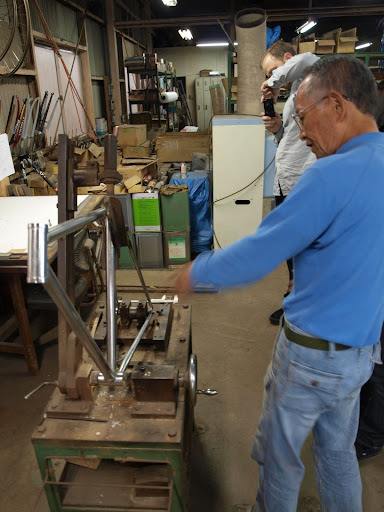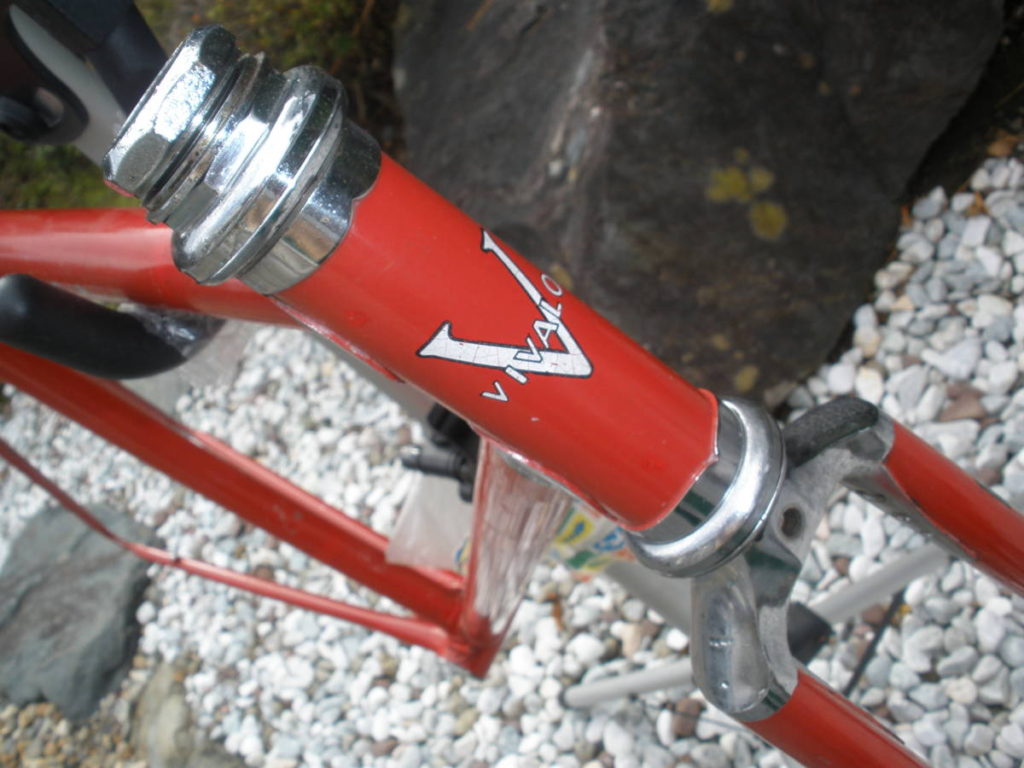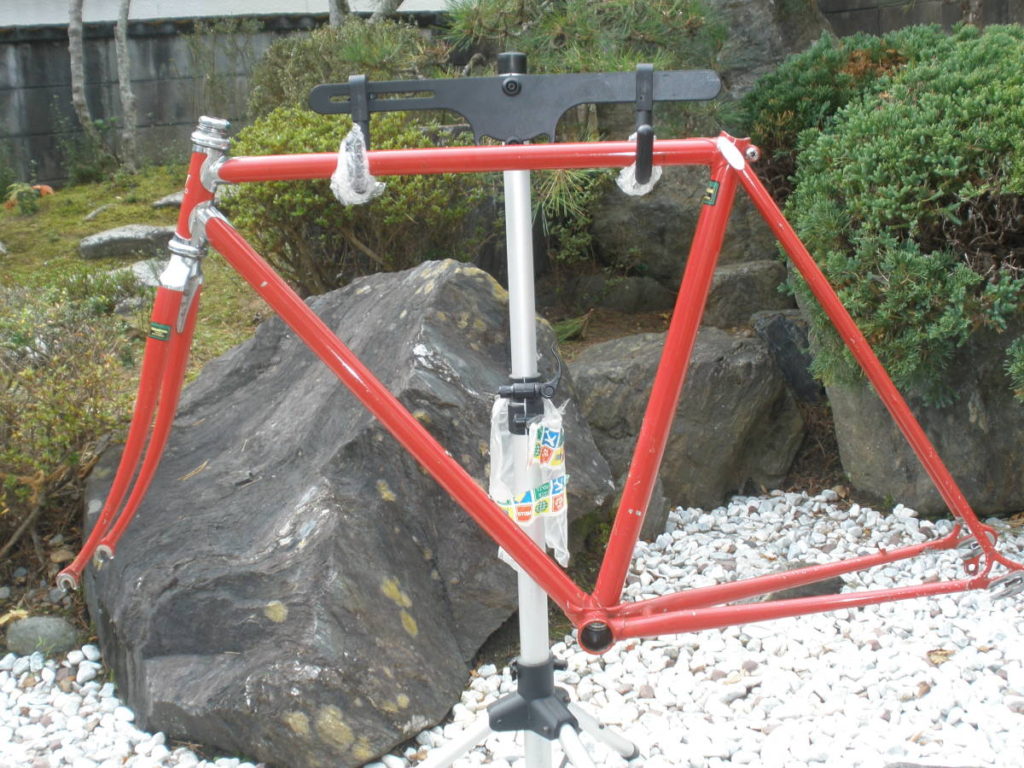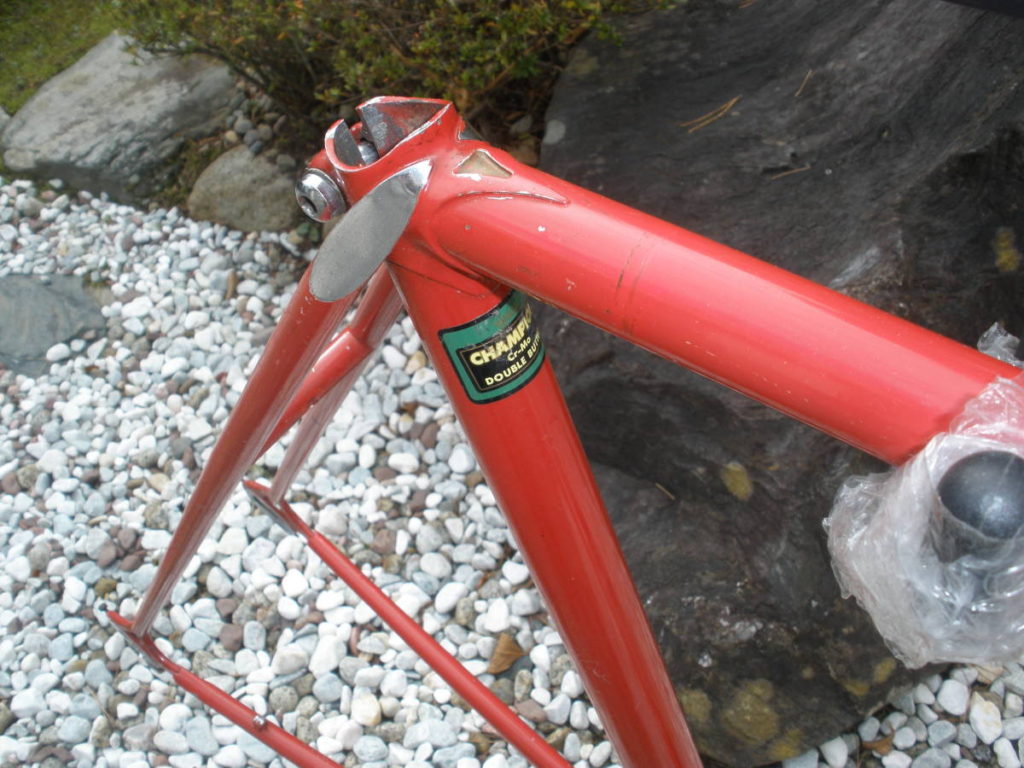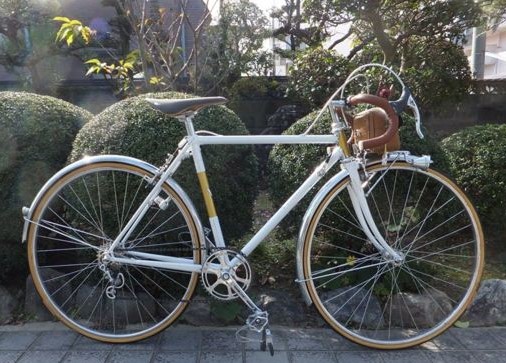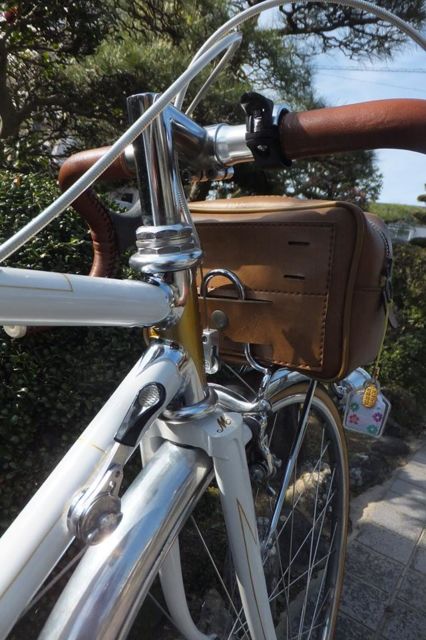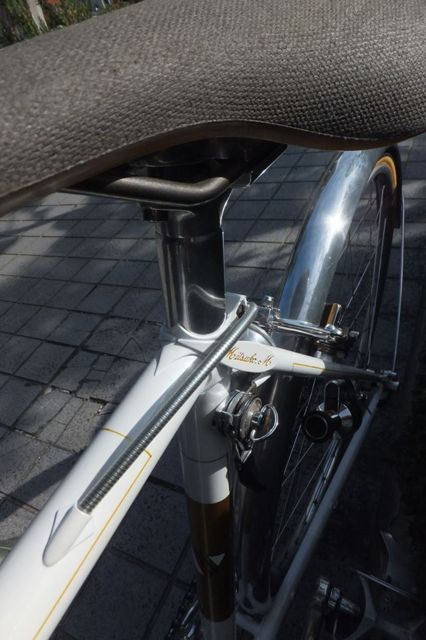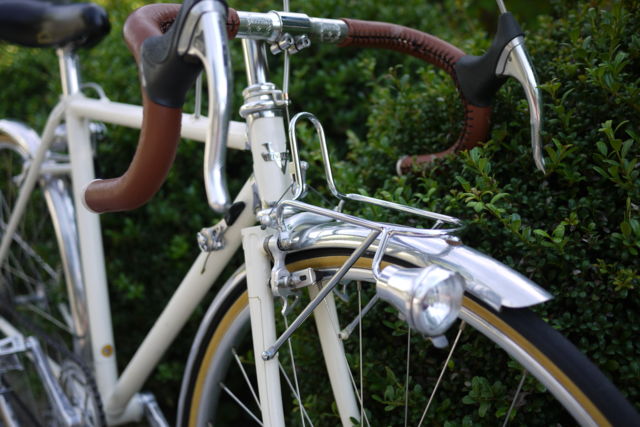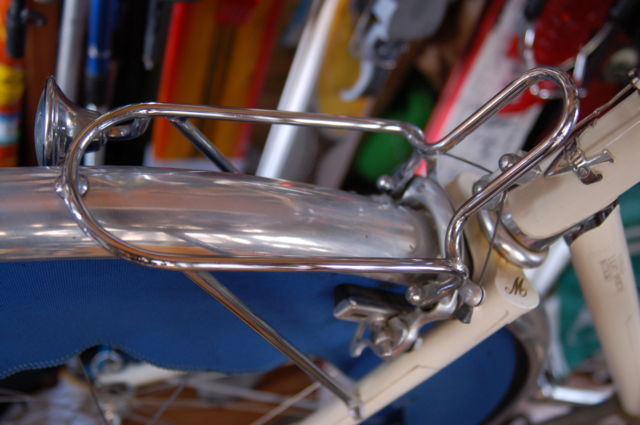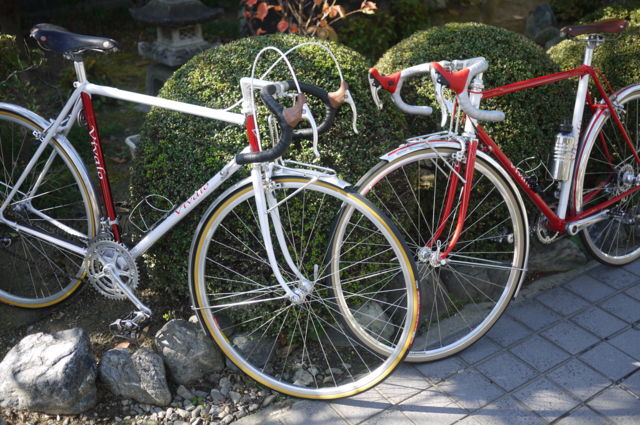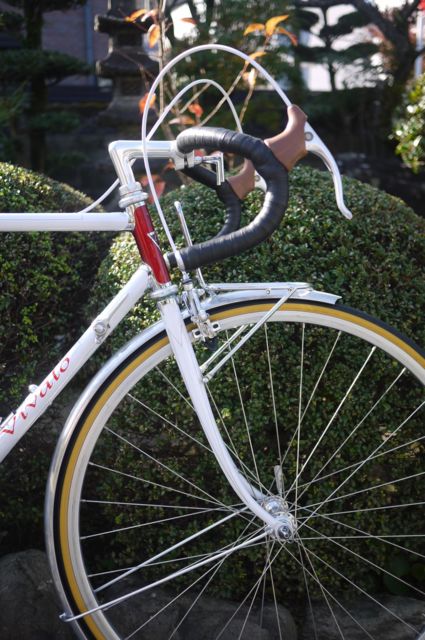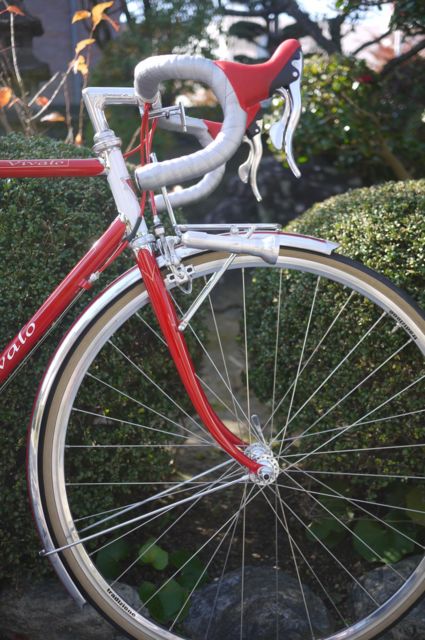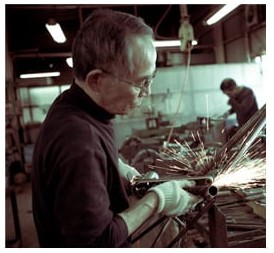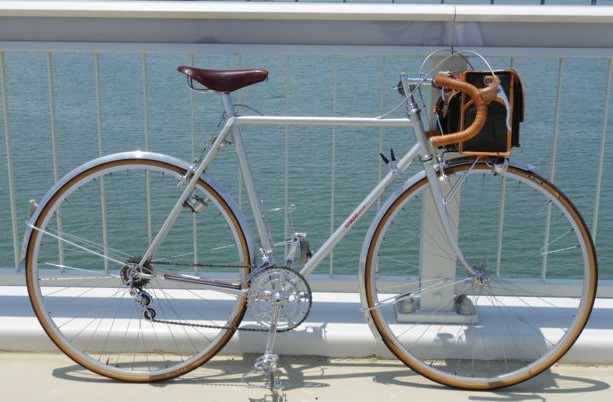I’ve always been fascinated by non-Keirin bikes built by Japanese frame builders who are famous for their track bikes. All of the most well-known builders of NJS track bikes began their careers in the late 1960s – early 1970s, when the bicycle touring craze was sweeping the world and Japan in particular. They apprenticed in shops that built road and touring bikes, and many of them built these kinds of bikes early in their careers. Touring and sportif bikes are often custom-made for clients, and are expected to include the kinds of beautiful details and high level of finish common with this kind of luxury item.
Shuichi Kusaka, the master builder behind the Vivalo brand, built a number of road, touring, and sportif customs. In the past 15 years, I have only seen a handful, and in this article I’ll be highlighting a few of these lovely bicycles. Read on to learn more!
Mr. Kusaka crafted steel bicycle frames for over 40 years in his small shop in Akashi, an industrial seaside town near Kobe, Japan. From an interview with Wallpaper Magazine in 2010:
“‘I started working for Nishiki (bicycle manufacturer) [in 1958]. Then, [in 1979], I started my own label, Vivalo.’ Few builders can boast such long experience but it comes as a surprise that Kusaka became a frame-maker not because he loved bicycles, but because he loved the idea of striving to achieve perfection. ‘Why bicycles? I just happened to work for a bicycle company.'”
At their peak, Vivalo was the largest supplier of bicycles for Keirin track racers. Here is a great photo set taken in the shop around 2008. Although I do not have a clear chronology of Vivalo, Kusaka built other kinds of high-end bicycles from the beginning of his career. Below is a frame currently for sale on Yahoo JP Auctions, and representative of his work around 1979/1980:
The frame is built from Tange Champion tubing and uses Bocama long-point lugs and an Agrati fork crown. With twenty years of experience already under his belt when he launched Vivalo, his craftsmanship is readily apparent in the finely finished seat stay caps and carefully filed lugs.
At left is a 1987 Vivalo 650C Sportif. Quite a petite frame, with just a 460mm top tube, the Cinelli head lugs have been modified for the correspondingly small head tube.
It is made from Tange Prestige tubing, and uses a Huret Jubilee shift lever mounted on the seat tube to activate a seat stay mounted dynamo.
The bike also uses a Huret Jubilee rear derailleur, and appears to omit a front derailleur. It has been designed for simplicity and no doubt light weight as well. The quality of the lug work is clear to see in the two photos above, and this is quite a stunning machine.
Here are two more Vivalo sportifs, of possibly newer vintage (given that the red one has downtube braze-ons for a modern groupset). They were made with cast Cinelli lugs, with the lugs on the white one being described as “Italian cut” and those on the red one being “French cut”. I’m not sure what those terms mean, as they look similar to me. The white one is built with 1970s Campagnolo Record components, while the red one uses 2011-era Campagnolo Athena.
After the Vivalo brand closed down in 2008, Kusaka made frame for the Kinfolk lifestyle brand for a few years. Kinfolk is no longer in the bicycle business, but their Flickr account remains available and is a great place to see more of Kusaka’s work. After leaving the Keirin business, it seems Kusaka enjoyed “getting back to basics” and handcrafted some gorgeous bikes for Kinfolk. Following the end of the Kinfolk collaboration, I’ve read that his latest venture is Ocean Cycle Factory, although their Facebook page hasn’t been updated since 2018.
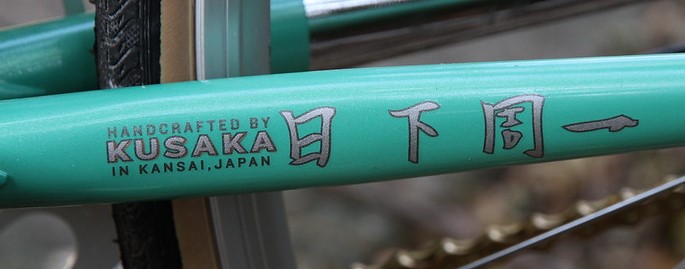
Now 82 years old as of this article, I don’t think Kusaka has hung up his torch just yet. Over the past years, I have seen a few modern-style steel road bikes pop up for sale with his signature on them. They’ve been lug-less, un-adorned designs in line with today’s current fashions, so not really my style. However, it’s wonderful to see this great Japanese frame builder continuing to hone his craft and try new ideas after an incredibly long career.
To wrap up, I’ll leave you with one more classic Vivalo sportif from 1981. Using Tange pressed-steel lugs cleverly shaped into the Rene Herse pattern, this one is a pair along with the gold-colored one posted at the top of this article. I look forward to discovering more of Kusaka-sensei’s work in the future, and perhaps one day owning one myself.


